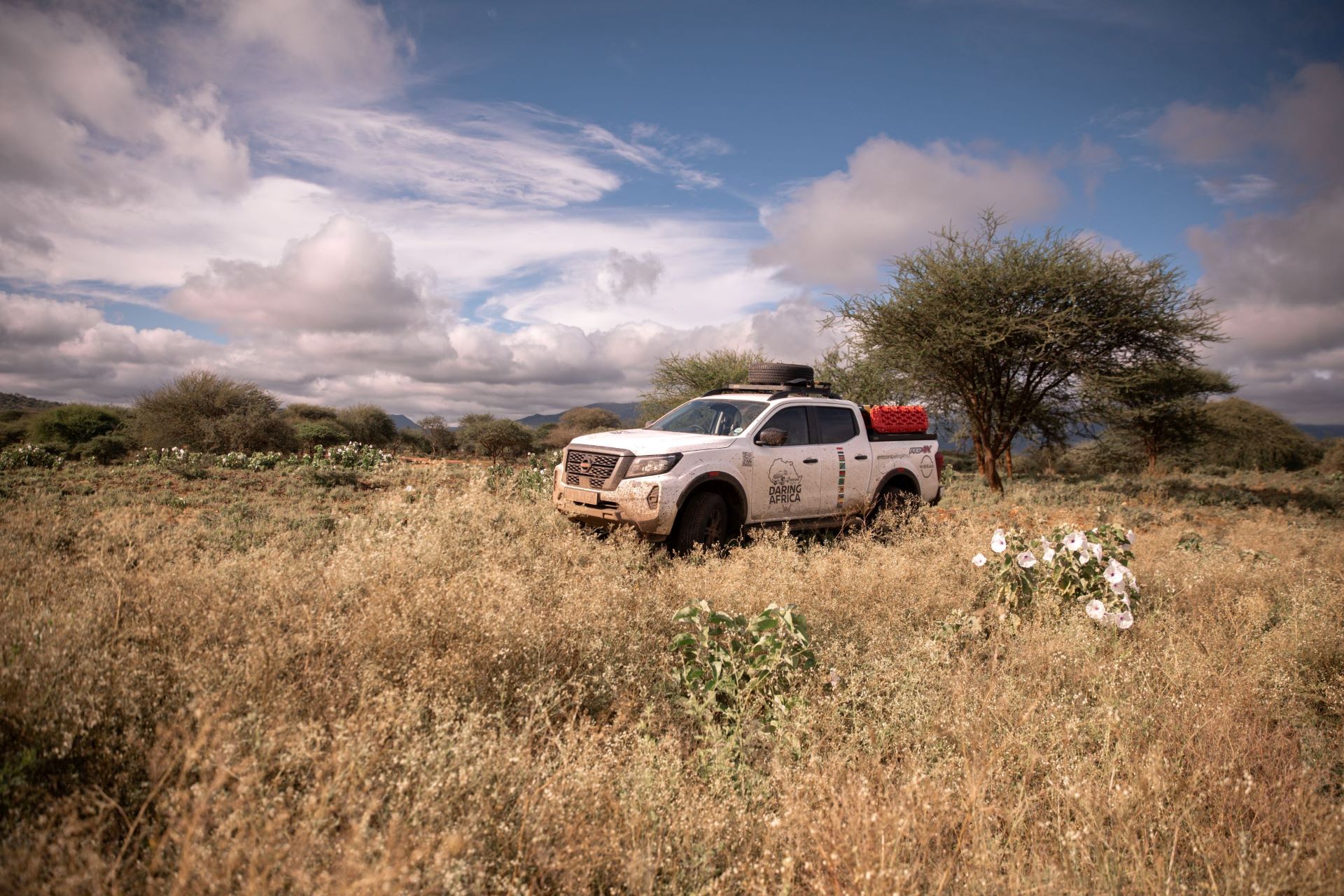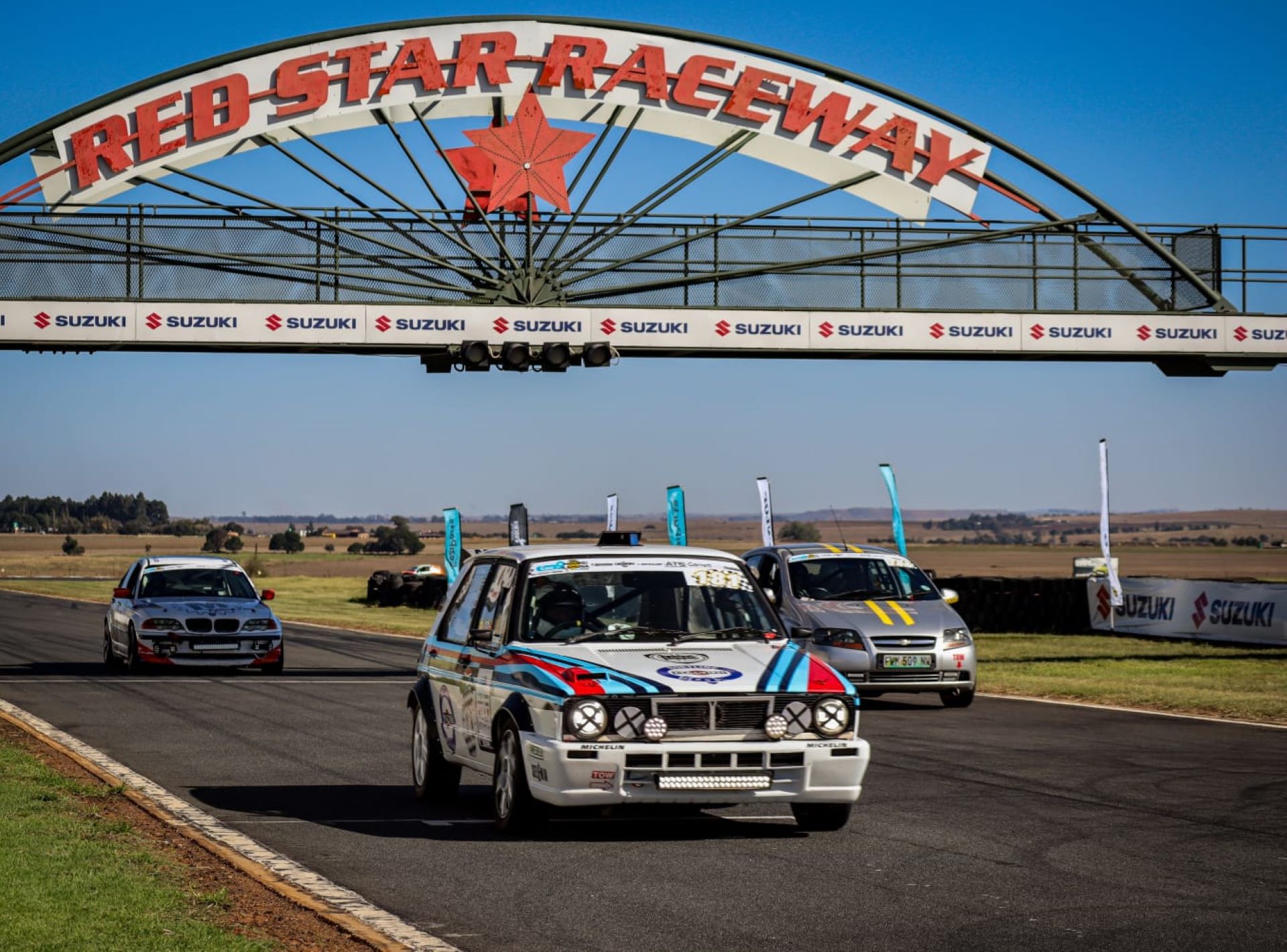Two things distinguish the freshly-minted Alfa Romeo 159 3.2 V6 Q4 from its lesser brethren: 1) the way it goes, and 2) the way it sounds. Bearing in mind that the other members of the 159 family have already been lauded as the best-handling front-wheel-drive, medium-sized sedans, full credit then must go to Alfa Romeo’s Q4 permanent four-wheel drive system for pushing the handling envelope even further. On point number two, no-one can make a V6 engine sound as melodious as the Italians can. Part purr, part rumble, part growl – it all comes together in a mechanical symphony of orchestral proportions. Let’s look at these two aspects of the flagship 159 in greater detail.
Actually there is one other thing – it looks slightly different thanks to standard 17-inch alloys and, if you’re really observant, you’ll notice the subtle red ‘Q4’ badge on its rump.
The Alfa Romeo Q4 four-wheel drive system
The new Alfa 159 proposes an evolution of the permanent 4×4 system with three differentials (with a Torsen C self-locking unit at the centre) already adopted on the Crosswagon Q4 (a derivative of the previous 156 range not seen in SA). The heart of this project is the “Alfa Romeo Q4 four-wheel drive” system which splits torque constantly and dynamically between the four wheels, reaching the highest levels of active safety and sportiness. The Torsen C self-locking differential sends drive torque 57% to the rear wheels and 43% to the front. The system also guarantees excellent traction in all grip conditions by automatically checking slip.
The torque split between the front and rear axles is modulated constantly by the Torsen C central differential on the basis of grip. This feature harnesses sportiness to enhance active safety. Modulation is mechanical, continuous and gradual, to enhance the perception of optimal, enjoyable, easy driving. There are no gaps in the torque delivery. Where grip is concerned, the behaviour adapts gradually and smoothly to changing road conditions. This “mechanical” control is backed up by electronic stability control, which boosts performance and safety margins, in line with the Alfa Romeo philosophy. The four-wheel drive car is the state of the art in technical terms and offers some important advantages:
-
Q4 permanent four-wheel drive with a Torsen C self-locking differential makes for better roadholding, entertainment and smooth responses. Other technological archetypes with electronically controlled joints do not achieve the optimal balance between understeer and oversteer or the smoothness that are innate in the Alfa 159, and translate into superb active safety.
-
The torque split in favour of the rear axle makes driving even more entertaining, because it makes the car even easier to handle, without detracting in any way from stability during sudden lane changes on the motorway, or other emergency manoeuvres.
-
The ability to travel safely in poor grip conditions without the aid of electronics in torque split for constant driving pleasure.
-
One could say that the Alfa 159 Q4 interprets four-wheel drive from the Alfa Romeo point of view: it is basically a “mechanical” system enhanced by cutting edge electronic technology to guarantee maximum comfort and entertainment, combined with superb performance and absolute safety.
The new 260 bhp 3.2 JTS V6 engine
The Alfa Romeo “cuore sportivo” really beats in the new V6 3.2 litre petrol engine, which is mated to a sporty 6-speed manual gearbox. It represents a significant departure from Alfa’s previous V6 engine, as well as its natural evolution. The new JTS engine is capable of a power delivery of 191 kW (8% more than the previous 3.2 V6); peak torque of 322 Nm at 4,500 rpm (+ 33 Nm, an increase of more than 11%); a specific power of 60 kW/l and specific torque of 100 Nm/l; a significant increase in torque at low speeds to improve the smooth delivery (approximately 30 Nm more than the previous 3.2 V6 engine, starting from 1500 rpm); maximum revs of 7,200 rpm; minimal maintenance (hydraulic tappets and timing gear with chain drive); low weight (aluminium cylinder head and crankcase); and Euro4 exhaust emissions limits. With this equipment, the Alfa 159 can reach a top speed of 240 km/h and accelerate from 0 to 100 km/h in 7 seconds.
Main technical features
The new 6-cylinder engine of the Alfa 159 continues the strategy begun with the 4-cylinder engines, and adopts the JTS (Jet Thrust Stoichiometric) direct injection system. This is an original Alfa Romeo concept that injects the fuel directly into the combustion chamber with a stoichiometric mixture optimised to enhance performance, but also guarantees low consumption and respect for the Euro4 emissions limits.
Numerous important components have been designed from scratch and are exclusive to the Alfa Romeo V6 engine. To start with, the cylinder head is aluminium and has 4 valves per cylinder, 2 camshafts per bank with the “Twin Phaser” continuous variable valve timing (intake and exhaust) already adopted on Alfa Romeo 4-cylinder engines and now applied on a 6-cylinder engine for the first time. Variable valve timing allows the phase angle on both cams to be varied by 50°, maximising performance on one hand, because the best phase can be chosen at all engine speeds, and reducing consumption and emissions with partial loads on the other.
At the same time it is possible to optimise the volumetric efficiency of the engine over the whole operating range, exploiting the degrees of freedom offered by variable valve timing: this means a very favourable torque curve, with 90% of peak torque available from 1800 rpm (290 Nm) and maintained over a broad range (from 1800 rpm to 6250 rpm). The valves are controlled by a roller finger system, with low mechanical dissipation, and hydraulic uptake of tappet play.
Another peculiar feature is the camshaft drive system which uses a primary chain that transmits the drive to the heads via two secondary chains. Tension is provided by automatic hydraulic tensioners which need no maintenance at all during the life of the engine.
The high pressure fuel pump of the direct injection system is mounted on the cylinder head, driven by a camshaft, maintaining the pressure of the injected fuel at 120 bar by a built-in pressure regulator.
The inlet ports and combustion chamber assembly is designed to optimise the air-fuel mixture, to achieve the correct turbulence of the inlet air, forming a homogeneous mixture, for stable, complete combustion that produces fewer pollutants. The four valves per cylinder with diameters of 33.4 mm on the inlet and 28.4 mm on the exhaust guarantee suitable permeability to enhance engine performance.
The volumes and port geometry of the aluminium inlet casing have also been adapted to the high air delivery of the high revs to enhance performance. The electronic throttle assembly with a 72 mm throttle valve is mounted on this casing. And finally, the compression ratio of 11.25:1 guarantees excellent engine performance even with regular 95 octane fuel.
Briefly, the main technical features that distinguish the new 3.2 V6 engine from the previous V6 engine are:
-
twin overhead camshaft with low friction drive;
-
direct petrol injection;
-
double continuous variable valve timing on the inlet and exhaust;
-
cylinder head in light aluminium alloy;
-
hydraulic tappets with automatic play uptake;
-
crankcase in light aluminium alloy;
-
maintenance-free timing gear drive chain;
-
Poly V automatic tensioner belt to drive the engine accessories;
-
throttle valve with electronic drive-by-wire activation;
-
single ignition coils;
-
low specific consumption and emissions;
-
EOBD;
-
4 lambda probes to control emissions;
-
double knock sensor to improve knock sensitivity and to optimise peak performance;
-
high performance exhaust manifold with built-in pre-catalysts;
• minimum maintenance; -
Euro 4 emissions.
The 3.2 V6 engine features an exhaust system that envisages a first group of catalysing elements relatively close to the cylinder heads to reduce the emissions level at the start of operation. Two catalysts under the floorpan and four lambda probes complete the system, so that the engine respects Euro 4 limits without adopting special systems such as secondary air or electric heating.
Another feature of the 3.2 V6 engine is the direct injection system (the fuel is supplied directly to the combustion chamber) whose main advantage is that it improves evaporation and this increases the engine’s volumetric efficiency. As a result, the supply of air and petrol is both denser and colder, which allows the compression ratio to be increased to 11.25, even if Euro Super petrol is used, with an octane index of 95 RON; a high compression ratio is useful because it makes it possible to increase both the performance and the energy efficiency of the engine.
And ignition is provided by a single sparkplug per cylinder. Direct injection combined with 4-valve-per-cylinder geometry creates a mix that tends to be more concentrated at the centre of the combustion chamber. The ignition system fits a single ignition coil per cylinder.
To recap – some of the standard equipment highlights common to both the 3.2 V6 and 2.2:7 airbags (incl. A driver’s kneebag)
-
Passenger airbag deactivation
-
Isofix child seat fastenings
-
ABS with EBD
-
Vehicle Dynamic Control (VDC)
-
\Anti Slip Regulation (ASR)
-
Hydraulic Brake Assistance (HBA)
-
Hill Holder
-
Remote central locking
-
Electronic ‘key’ with starter button
-
Dual-zone climate control (with rear ventilation slots)
-
Radio/CD frontloader
-
Steering wheel controls
-
Centre console with oddments compartment
-
Cruise control
-
Leather interior
-
Electric windows/mirrors
-
Visibility Pack (rain- and windscreen fogging sensors as well as electrochromatic exterior and interior mirrors)
Pricing & Servicing
Alfa Romeo 159 3.2 V6 Q4 – R376 000 (recommended retail price).
The new Alfa 159 3.2 V6 Q4 enjoys the full after-sales backing in South Africa thanks to a comprehensive parts inventory and to trained technicians at Alfa Romeo dealerships countrywide. The good news is that the newcomer is covered by a 5 year/100 000 km maintenance plan. The new model (like its 159 siblings) is also covered by the AA Fleet care roadside assistance for 12 months. The service is active 24 hours a day, 365 days a year and is available by calling the dedicated toll-free number 0800 223 727.
Services are required at 30 000 km intervals.


